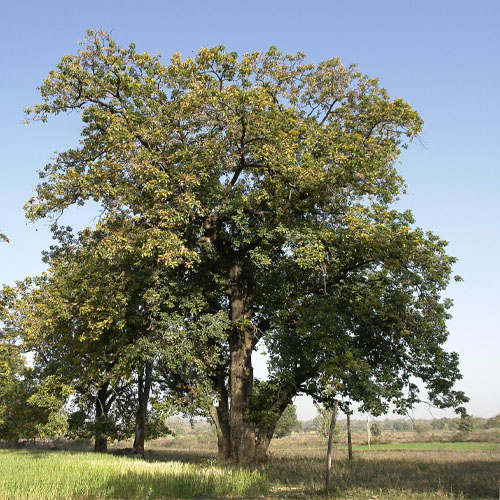Mahuaa Plants
Mahuaa, also known as Madhuca indica, Madhuca longifolia, or Madhuca latifolia, is a tropical tree commonly found in India and other parts of Southeast Asia. It is known for its large, fragrant flowers, edible fruits, and various uses in traditional medicine and local communities.
Appearance
- Size and Structure: Mahuaa is a medium to large deciduous tree that can grow up to 20-30 meters (66-98 feet) tall. It has a broad, spreading canopy and a relatively straight trunk.
- Leaves: The leaves are large, elliptical to ovate, and have a glossy green surface. They are arranged alternately along the branches and can be up to 15-30 cm (6-12 inches) long.
- Flowers: The tree produces small, creamy-white or yellowish flowers that are fragrant and bloom in clusters. The flowers appear in the spring and early summer.
- Fruit: Mahuaa bears a round, fleshy fruit that is green when unripe and turns yellow or brown when mature. The fruit contains a single seed and is edible.
Habitat
- Native Range: Mahuaa is native to tropical and subtropical regions of India, Bangladesh, Nepal, Sri Lanka, and parts of Southeast Asia.
- Growing Conditions: The tree prefers well-drained soils and full sun but can tolerate a range of soil types, including sandy and clayey soils. It is drought-tolerant once established and is commonly found in forests, savannas, and open woodlands.
Ecological Benefits
- Wildlife Habitat: The Mahuaa tree provides habitat and food for various wildlife, including birds, insects, and small mammals. Its flowers attract pollinators like bees and butterflies.


